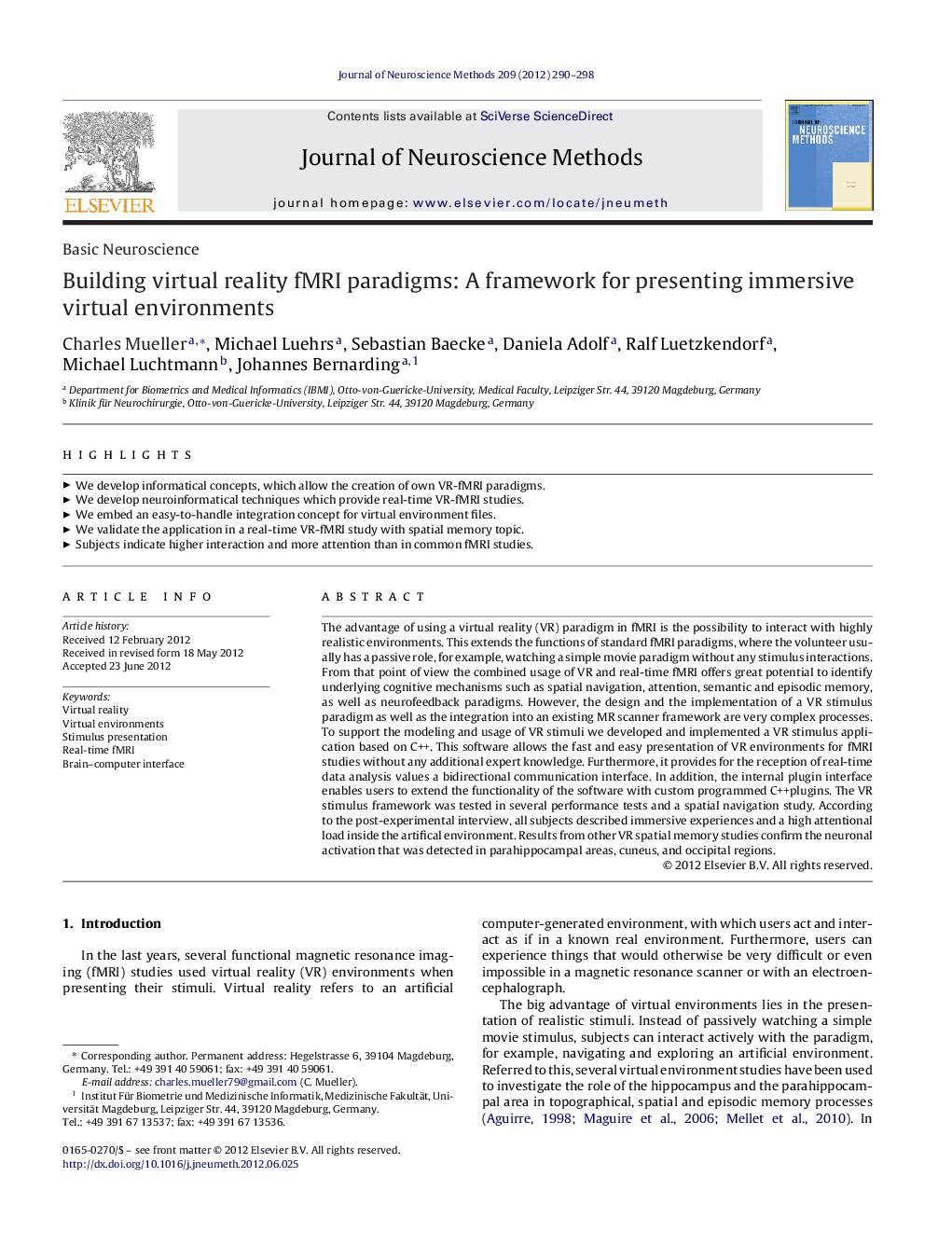| کد مقاله | کد نشریه | سال انتشار | مقاله انگلیسی | نسخه تمام متن |
|---|---|---|---|---|
| 4335135 | 1295126 | 2012 | 9 صفحه PDF | دانلود رایگان |

The advantage of using a virtual reality (VR) paradigm in fMRI is the possibility to interact with highly realistic environments. This extends the functions of standard fMRI paradigms, where the volunteer usually has a passive role, for example, watching a simple movie paradigm without any stimulus interactions. From that point of view the combined usage of VR and real-time fMRI offers great potential to identify underlying cognitive mechanisms such as spatial navigation, attention, semantic and episodic memory, as well as neurofeedback paradigms. However, the design and the implementation of a VR stimulus paradigm as well as the integration into an existing MR scanner framework are very complex processes. To support the modeling and usage of VR stimuli we developed and implemented a VR stimulus application based on C++. This software allows the fast and easy presentation of VR environments for fMRI studies without any additional expert knowledge. Furthermore, it provides for the reception of real-time data analysis values a bidirectional communication interface. In addition, the internal plugin interface enables users to extend the functionality of the software with custom programmed C++ plugins. The VR stimulus framework was tested in several performance tests and a spatial navigation study. According to the post-experimental interview, all subjects described immersive experiences and a high attentional load inside the artifical environment. Results from other VR spatial memory studies confirm the neuronal activation that was detected in parahippocampal areas, cuneus, and occipital regions.
► We develop informatical concepts, which allow the creation of own VR-fMRI paradigms.
► We develop neuroinformatical techniques which provide real-time VR-fMRI studies.
► We embed an easy-to-handle integration concept for virtual environment files.
► We validate the application in a real-time VR-fMRI study with spatial memory topic.
► Subjects indicate higher interaction and more attention than in common fMRI studies.
Journal: Journal of Neuroscience Methods - Volume 209, Issue 2, 15 August 2012, Pages 290–298